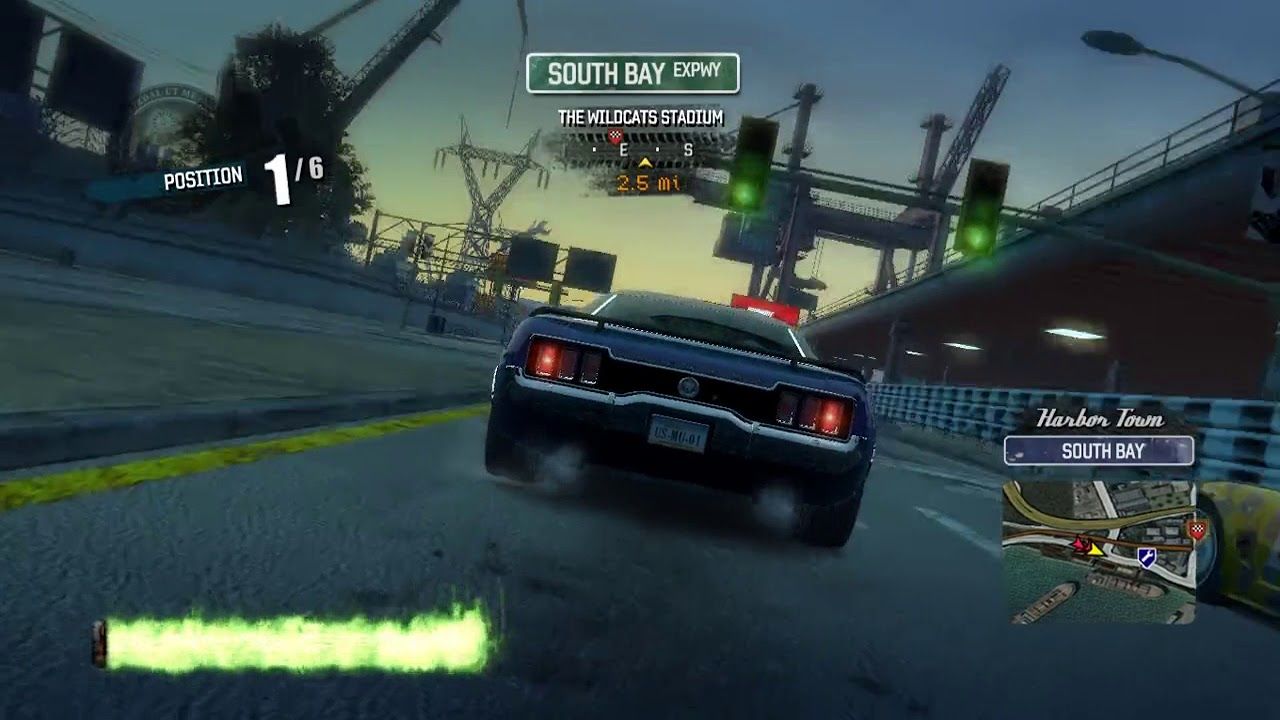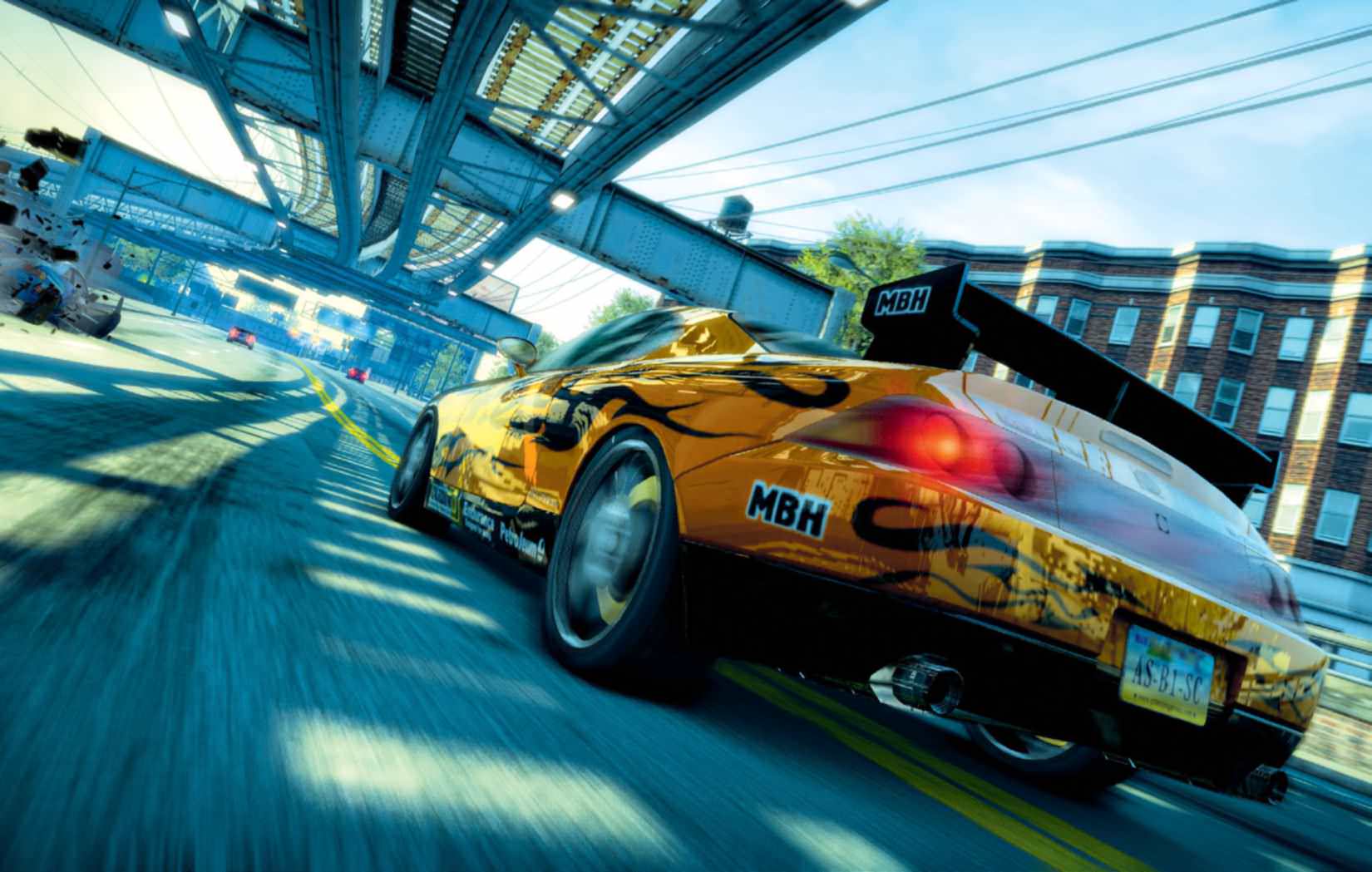Racing in Paradise City Is Terrifying, in a Good Way
Where the cars are fast and the races are gritty

With the release of Need for Speed Unbound just around the corner, it's time to look back at developer Criterion’s last major Burnout installment: Burnout Paradise. After all, while the arcade racing game has always been known to adopt an incredibly aggressive style of play, Paradise is the first in the series to take the racing down to an open-world map.
Enter Paradise City, an open-world playground with a surprisingly diverse locale consisting not only of long coastlines and sprawling metropolitan avenues but also curvy mountain roads. As with most open-world racing maps, Paradise City is littered with ‘attractions’ such as huge jumps disguised as unfinished construction works, glaring billboards that are just begging to be smashed apart, and dirt-filled shortcuts.

But what sets racing in Paradise City apart is its unorthodox approach to the action, even among fellow open-world racing locations. All Paradise City races are exclusively point-to-point, with an even bigger catch: racers are only provided with two checkpoints, the start line, and the finish line.
In addition to the two essential checkpoints, players are also provided with a compass at the top of the screen that points to the finish line… and that is basically it, apparently. No imaginary barriers, lines, or chevrons to guide players towards the finish line. The game even lacks a ‘wrong way’ prompt, meaning racers can go kilometers towards a certain direction without knowing the finish line is the other way. Alternatively, racers can accidentally find a faster route that can lead them to victory, leaving a huge gap from other competitors. At first glance, it oozes pure unpredictability, on top of adding an impromptu feel to the races.
Of course, observant racers can utilize some additional tools to assist in their sprint. For starters, their car’s blinkers will blink in the right direction when approaching intersections. Additionally, racers can also pay attention to a HUD displaying street names on top of the screen: when approaching an intersection, the street name that flashes indicate the correct street that will (eventually) take them to the finish line. But since these bits of information are not readily apparent to players, they take practice and time to fully utilize.

After all, how is one not supposed to be overwhelmed with all that high-octane car action?
Every usable vehicle in Paradise is fast and agile in its own right, capable of providing an adrenaline-fueling sense of speed; even the slower cars that players unlock early in the game can feel fast. That built-in agility, however, comes with its own downside: they can feel slippery at times. One slight oversteer or understeer, and a nasty wreck awaits. This is especially true with the faster sports/supercars that take little effort to crash and burn.
The cars may be fast, but it is the design of Paradise City that works to augment that sense of danger; the roads themselves are narrow, short, and hazardous. A long and spacious stretch of road is a rarity in Paradise City, and the ones that exist are packed with traffic, which can only spell disaster for the nimble yet fragile cars.
Take Need for Speed Heat’s Palm City for comparison; the roads are wide, lengthy, and generally forgiving and players can plow through roadside obstacles as well as traffic for a minor speed penalty. On the flip side, Paradise City can be unforgiving at times where obstacles heavier than streetlamps might as well act as walls. Not to mention a column of cars that can sometimes be found parked on the side of the road that can narrow down road width for racers. The map may be spacious, but that does not translate to a less suffocating battleground.
The combination of breakneck car speed and roadside (or on-road) hazards can be lethal, as they give players little time to react. A whiff against oncoming traffic can send your car flying to the sidewalk. A tiny trip against the guard rail can crush your car. When it comes to battling other racers, it’s the tiny decisions or movements that count.

As such, the classic Burnout formula still works in the open-world setting, where being aggressive can work for you or against you. A small, well-placed shunt can cause the opponent’s car to tumble, but the same can be said for your car. When facing aggression from a rival racer, players have to take the presence of obstacles into account, in order to lure the rival into a crash-prone position. On the other hand, attacking another racer can sometimes lead to accidentally crashing into the guard rails. Racers will find that they are a lot harder to shut down when boosted, but boosted opponents can exploit the momentum to take them down easily.
In conclusion, racing in Paradise City can present a daunting challenge. It is wild and unpredictable, but ultimately a fresh experience, one that can easily bring someone to the edge of their seats.
While one can argue that it delivers a street racing experience better than street racing-based games such as NFS Heat, a closer inspection reveals that Paradise brought something entirely different; rather than a semi-formal street race event, racing in Paradise felt like an impromptu, no-holds-barred sprint. It felt like two formidable racecars pulling beside each other at a traffic light and deciding to race to the nearest landmark. The main difference being they don’t just go for glory; they also go for each other.
It should go without saying that they should bring back Burnout. Other games like Wreckfest have done a great job filling the void of the car crash simulator. Unfortunately, no game has proven capable of giving the same high-speed aggressive arcade racing as Burnout did for so many years.
And instead of dampening the experience, the open world of Paradise City serves to strengthen that statement.
